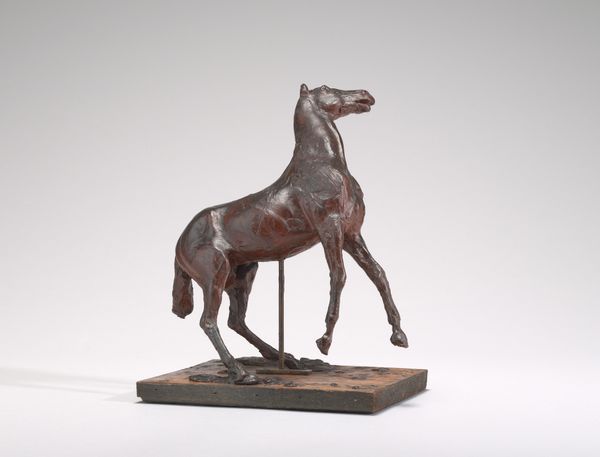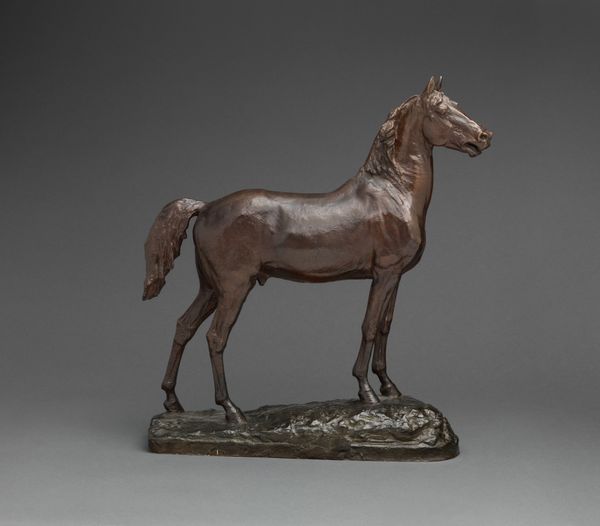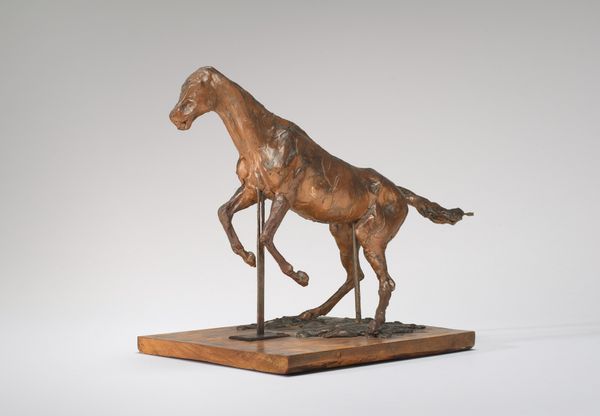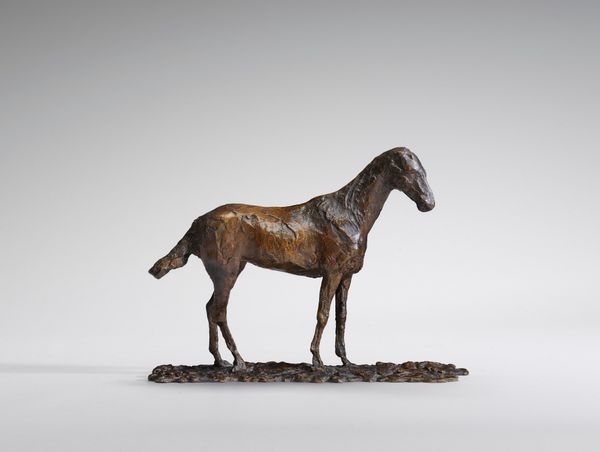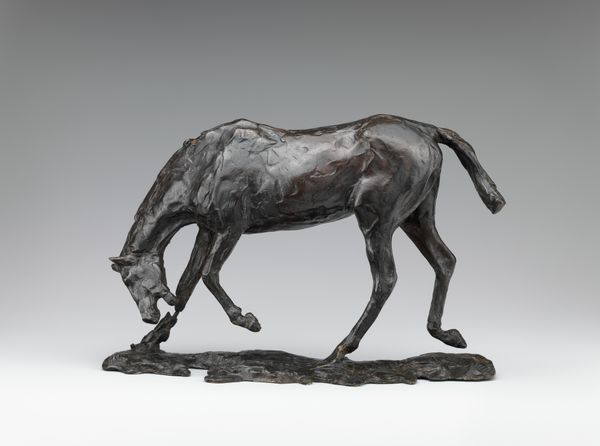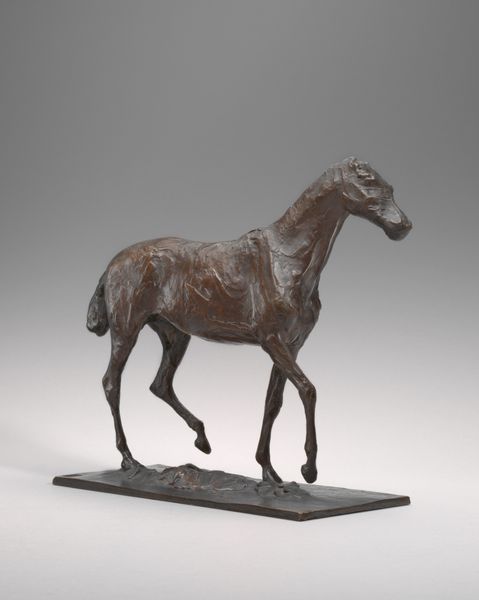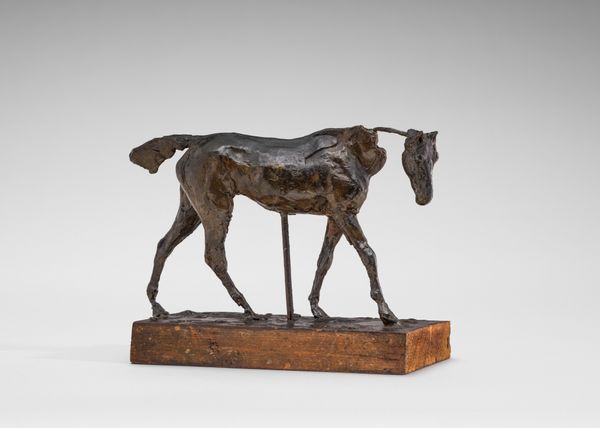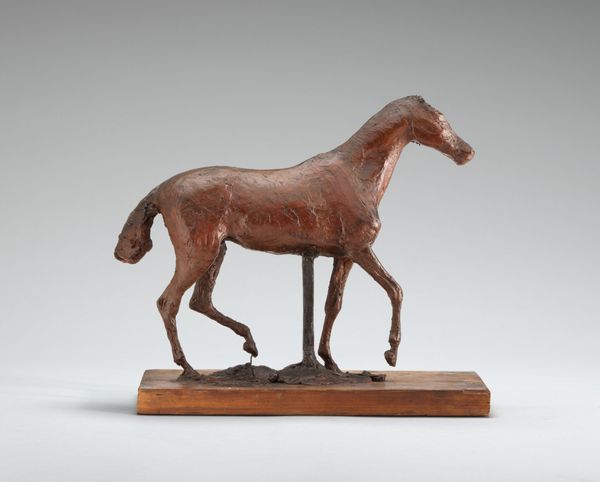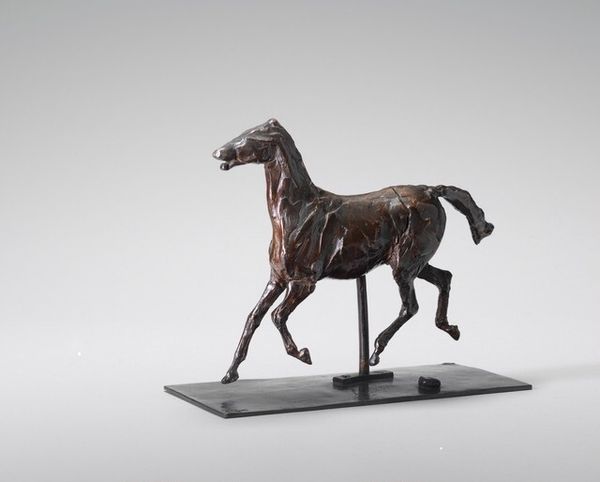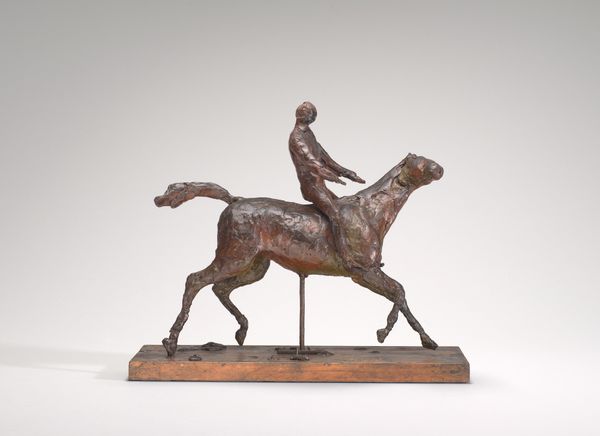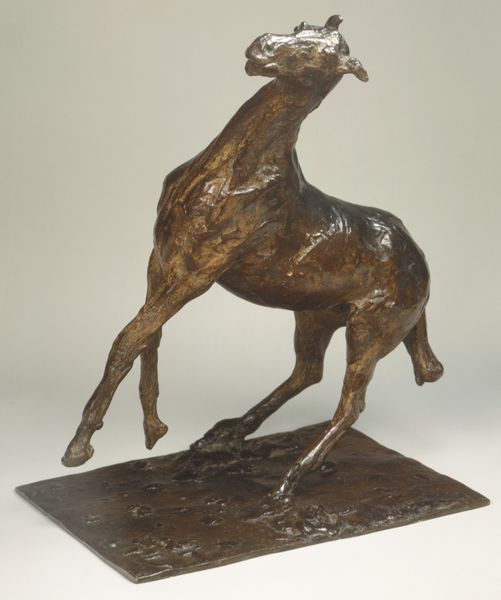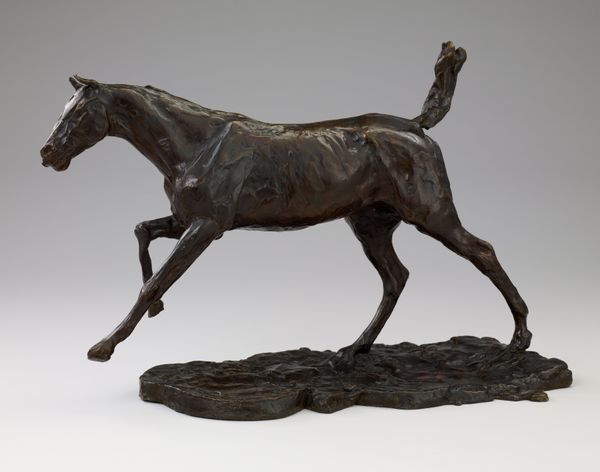
Dimensions: overall with base: 31 x 20.2 x 25.5 cm (12 3/16 x 7 15/16 x 10 1/16 in.) height without base (of horse): 30.6 cm (12 1/16 in.)
Copyright: National Gallery of Art: CC0 1.0
Editor: We're looking at Degas' bronze sculpture, "Horse Rearing," created sometime between 1880 and 1964. It's incredibly dynamic! What strikes me most is how it captures this fleeting moment of the horse's power and instability. What do you see in this piece? Curator: I see a potent commentary on societal power structures as revealed through the body. This sculpture allows us to consider the horse as a symbol of both domination and vulnerability, which aligns with broader conversations around exploitation, gendered roles, and the control of nature in late 19th-century France. How might the horse’s dynamic pose – captured in bronze – reflect anxieties about social upheaval during that era? Editor: That's fascinating! I hadn't considered it in relation to social anxieties. Is the choice of bronze significant, given those ideas? Curator: Absolutely. Bronze, often associated with permanence and strength, here serves to freeze a moment of precarious balance. It forces us to question the supposed stability of the patriarchal structures of the time. The horse, a common symbol of male prowess and power, is caught off balance, reflecting the vulnerability of the very systems it represents. Degas' sculptures were often linked to his socio-political beliefs – or at least an ironic observation of the Parisian elites. Does the lack of adornment of the horse lead you to question how power is projected? Editor: It does. Seeing it as more than just a beautiful form makes it even more compelling. Thank you! Curator: My pleasure! It's through these intersections of art and societal context that we truly gain a deeper appreciation.
Comments
No comments
Be the first to comment and join the conversation on the ultimate creative platform.

